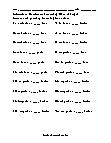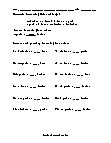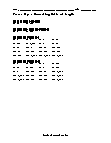Units of Length Worksheets
How to Convert Units of Length -
The metric system involves a unit of length as the meter. There are smaller and bigger units of length where meter remains the standard unit. The following diagram shows the conversion chart for metric units of lengths: kilometers, meters, centimeters and millimeters.
Here is the display of Common Metric Length Conversions.
Kilometers (km) to Meters (m) ×1000. (Move decimal point 3 to the right).
Meters (m) to Centimeters (cm) ×100. (Move the decimal point 2 to the right).
Meters (m) to Millimeters (mm) ×1000.. (Move decimal point 3 to the right).
Centimeters (cm) to Millimeters (mm) × 10. (Move decimal point 1 to the right).
Millimeters (mm) to Centimeters (cm) ÷ 10. (Move decimal point 1 to the left).
Millimeters (mm) to Meters (m) ÷ 1000. (Move decimal point 3 to the left).
Centimeters (cm) to Meters (m) ÷ 100. (Move decimal point 2 to the left).
Meters (m) to Kilometers (km) ÷ 1000. (Move decimal point 3 to the left).
Notice that to convert from a physically larger unit, such as kilometer (km), to a physically smaller unit, such as meter (m), you always multiply. On the other hand, to convert a measurement in a smaller unit to a larger unit, you always divide. For example, to convert from meters to centimeters, you need to multiply by 100. Where meter is a bigger unit and centimeter is a smaller unit.
-
Independent Practice 1
Students practice with 20 Length conversion measurement problems. The answers can be found below.
View worksheet -
Independent Practice 2
Another 20 Length conversion measurement problems. The answers can be found below.
View worksheet -
Homework Worksheet
Reviews all skills in the unit. A great take home sheet. Also provides a practice problem.
View worksheet
Right Body Part?
Why isn't your nose 12 inches long?
Because then it would be a foot.







